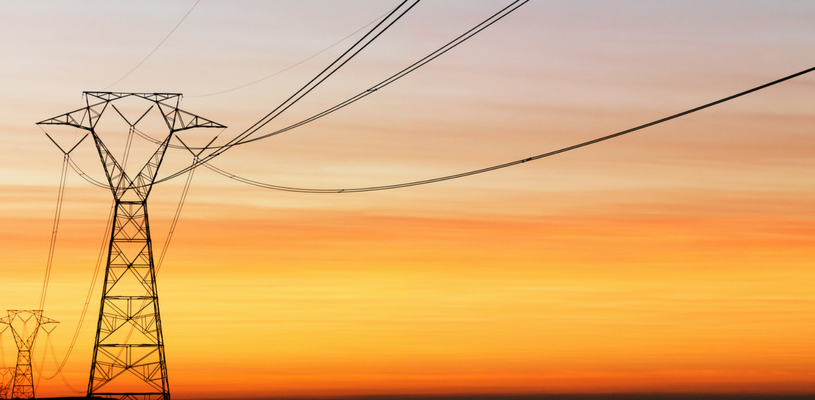For electric utilities, energy is the holy grail

The billion-dollar question is, how can we cheaply and reliably store energy for the grid? The picture is clear: coal-powered electrical utilities and the oil-powered transportation industries are the largest sources of man-made greenhouse gases that are causing global warming. It is also clear that we have to reduce our dependence on “cheap” fossil fuels and shift to alternative forms of low-carbon energy in order to have any chance of limiting global warming to under two degrees Celsius (°C) by 2050.
The solution, however, is already here; the prices of wind and solar energy have been dropping dramatically over the past two decades, and now both wind and solar energy can compete on price with a new-build coal-fired power plant. Critics who claim that renewable energy systems require large government subsidies in order to compete conveniently overlook the fact that, for years, the fossil fuel industries – both coal and oil production –have been receiving massive subsidies, as much as $500 billion per year. These polluting industries also overlook the hidden costs – the externalities that include environmental damage and public healthcare costs from air pollution, as well as the high risks involved in coal mining, with nearly 5,000 deaths each year in China alone.
Renewable energy solutions have been around for years, overlooked as the world’s growing appetite for energy was met with apparently limitless supplies of cheap oil and coal. But, here is the quandary: there are presently some two billion people in the developing world who have no access to electricity, and they will be joined by another three billion by 2050. It is vital that we find some low- or zero-carbon source of energy to supply this massive new market. If this demand is filled by the fossil fuel industry, the temperature of our planet could increase by four or five degrees Celsius by the end of the century.
We already have the solution: renewable energy systems are already working and, in just a few more years, increasing production levels will further drive down costs. Some experts even predict that a combination of wind, water, and sun – wind power, a mixture of different types of solar energy, along with hydro and ocean energy –will be able to solve all of the world’s energy needs by 2030.
There is, however, one problem: both wind power and solar energy are intermittent sources. This means that, when the wind doesn’t blow or the sun does not shine, there is no power. The solution to this problem is energy storage.
Energy Storage Solution
Energy storage systems have also been around for some time; but, now there is an added incentive, as utilities deal with the problem of introducing renewables, again mainly wind and solar power, into the grid network. The intermittent, non-steady-state output of both wind and solar power means that the grid network has to deal with sudden spikes. Next, the outputs from these systems need to be matched with the demand on the grid. For example, the intensity of wind power is greatest at night when the demand on the grid is lowest – off peak. So, how can we manage this?
There are a wide variety of energy storage systems that include mechanical, electrical, and electrochemical (battery) types. The schematic in Figure 1 shows the main types of storage system, along with the storage capacity and also the speed of response. Depending on the application, grid storage systems may be called upon to provide power with a response time ranging from a few seconds up to several hours. The left side of the figure shows technologies that find use in uninterruptible power supply systems, while the middle covers electricity transmission and distribution support, and the right side shows bulk energy storage systems.
Case Studies
The most common type of energy storage is pumped hydro. This approach is similar to traditional reservoir-based hydropower, except that surplus power is used to pump water up to the reservoir, which can then be released through a generator as required. One interesting example is the case of Denmark, which has embarked on an ambitious plan to generate 50 percent of the country’s energy demand from wind power by 2025. Denmark has installed a large number of wind turbines in the North Sea and has to deal with the problem of how to deal with the large amount of surplus power that is generated mainly at night. Since Denmark’s grid network is interconnected with neighbouring German, Swedish, and Norwegian grids, it can effectively export surplus wind power to Norway, where the country’s lakes can be used for storage. Other options include the use of the country’s growing fleet of electric cars that can be charged during the night and then feed some power back to the grid during the day (V2G or vehicle-to-grid).
Another mechanical-based technology that can be used to store surplus power is compressed air. A balloon, airbag, or a sealed cavern can be located 50 or so metres under water and the surplus power used to pump air into this reservoir. A pilot project is presently underway that involves a system in Lake Ontario, connected by nearly four kilometres of piping. When needed, the compressed air can be released to feed a generator and used to assist Toronto Hydro in managing periods of high demand.
Battery Storage
Most of the interest in energy storage systems these days would seem to revolve around battery systems (not the traditional lead acid, car battery types, but the modern lithium ion systems that were developed originally for the computer and mobile device market). Many companies are exploring this approach, both for domestic and military applications. One local lithium battery manufacturer is presently installing a novel approach to electrical utility energy storage. Working with the U.K.’s Scottish and Southern Energy Power Distribution (SSEPD) as part of the Thames Valley Vision Program, the company plans to install some 25 of its lithium ion batteries ranging in size from 12.5 kilowatts to over 80 kilowatts at different points around the grid network. The rationale is that the battery systems are charged during off-peak times and are then able to respond and supply power back to the grid during sudden periods of localized high demand. This approach eliminates the need for increasing new generating capacity, a costly and difficult enterprise that involves the installation of new transmission lines.
This smart grid approach is just one of the many variations where energy storage is the missing link. Mining companies, as well as many of Canada’s First Nations communities are located in remote locations and typically depend on diesel power for their energy supply. Not only is it costly and difficult to ship diesel over ice roads –which are steadily shrinking due to climate change; diesel generation also emits particulates that are known carcinogens. The solution is a smart grid or microgrid made up of wind and solar power linked to battery storage with a much smaller diesel unit in reserve.
The Future
Energy storage is going to be key to the whole global demand for more efficient, flexible, and low-carbon energy. It can help balance the ebbs and flows of electricity in the grid and enable a larger share of renewable energy –especially wind and solar power – to be brought in. It can enable utilities to avoid investments in costly infrastructure by making the grid more efficient. In the wider global energy picture, just as cell phones have displaced land lines, it is increasingly likely that the billions of new energy users in the developing world will turn to some type of smart grid or microgrids, using limitless solar, backed with other renewables such as wind and ocean power – along with cheap battery storage. MW
BERNARD FLEET is an Adjunct Professor at Ryerson University, Department of Environmental Applied Science and Management; he is also a board member at Electrovaya Corp., a Mississauga-based manufacturer of lithium battery energy storage systems. He can be reached at Fleetec@gmail.com. GURKIRAN KAUR recently completed her Masters in Sociology from Ryerson University and is planning to work on her Ph.D. in the same field.
as published in the January 2016 issue of Municipal World



